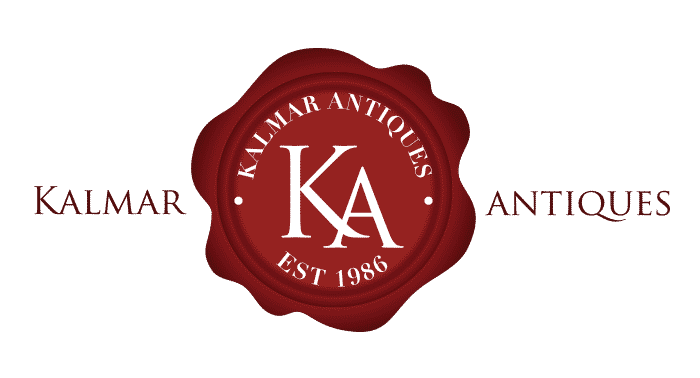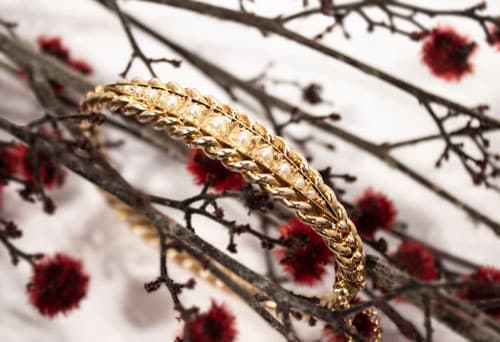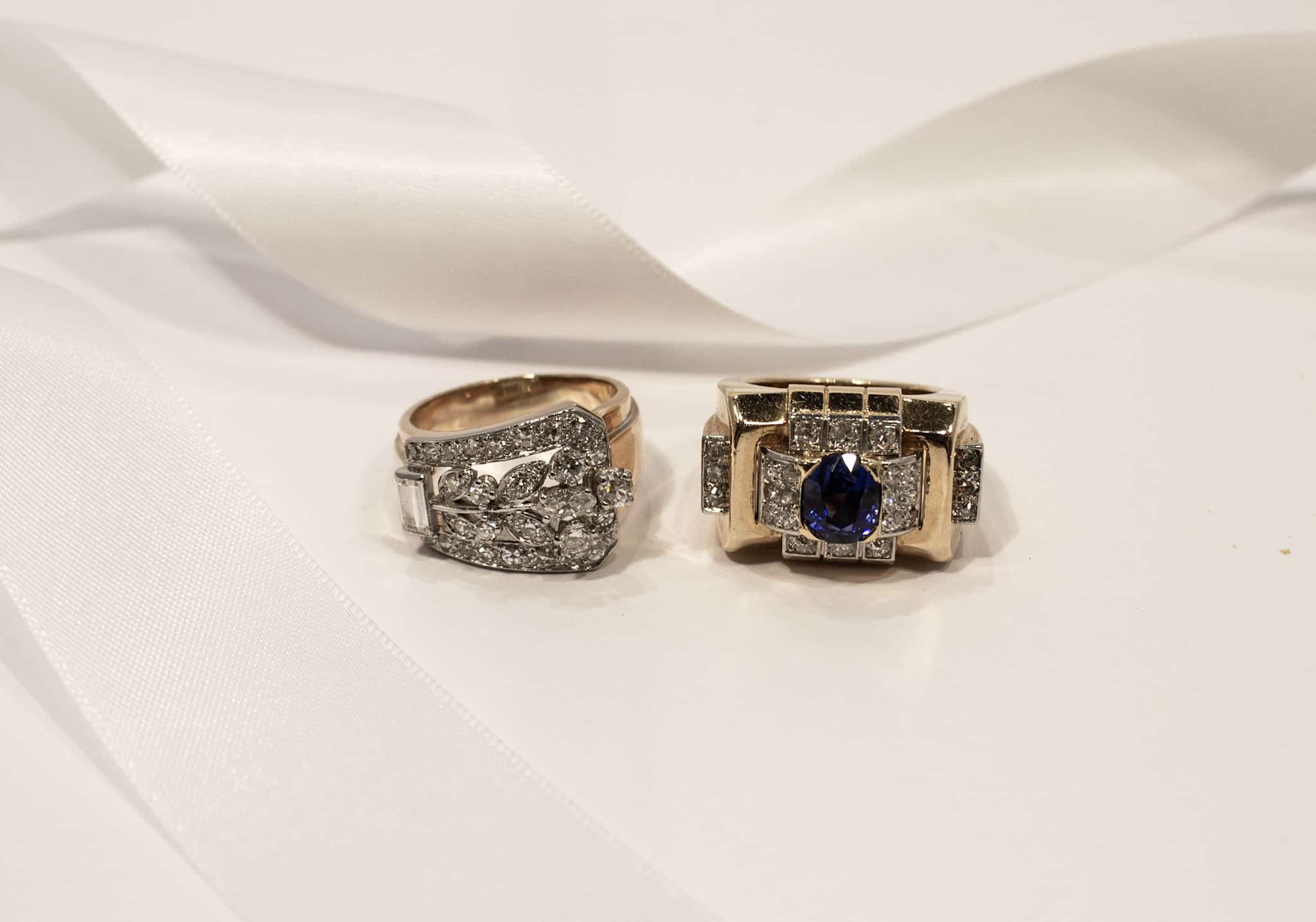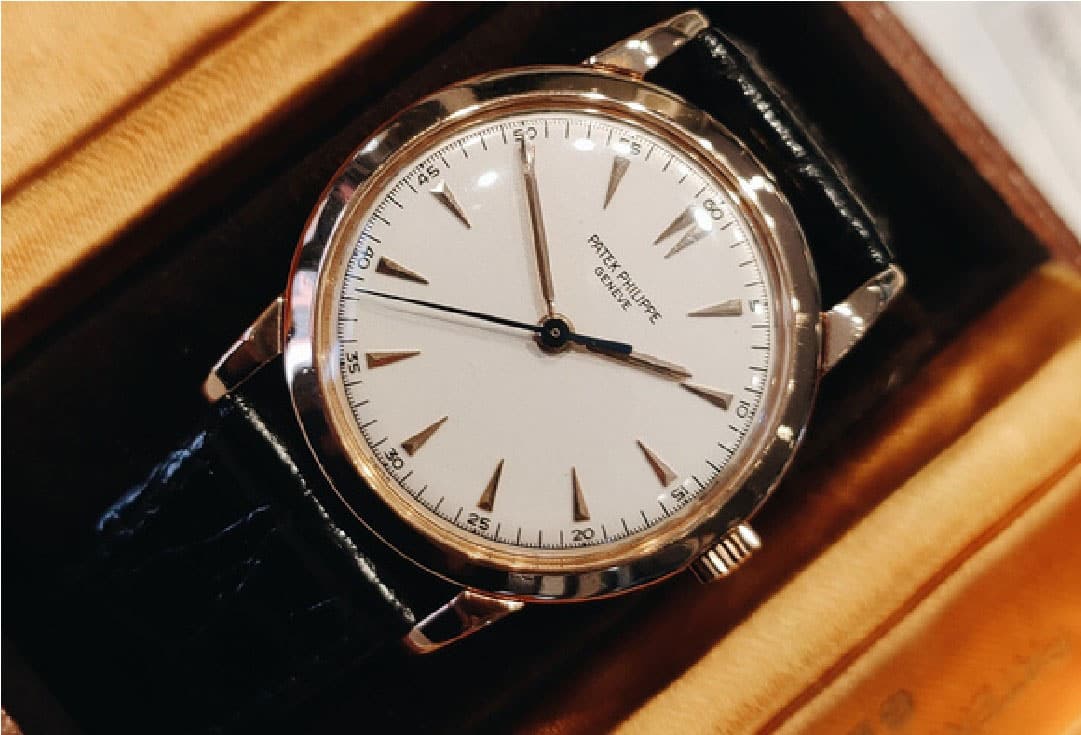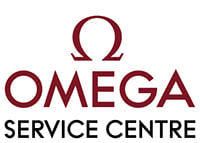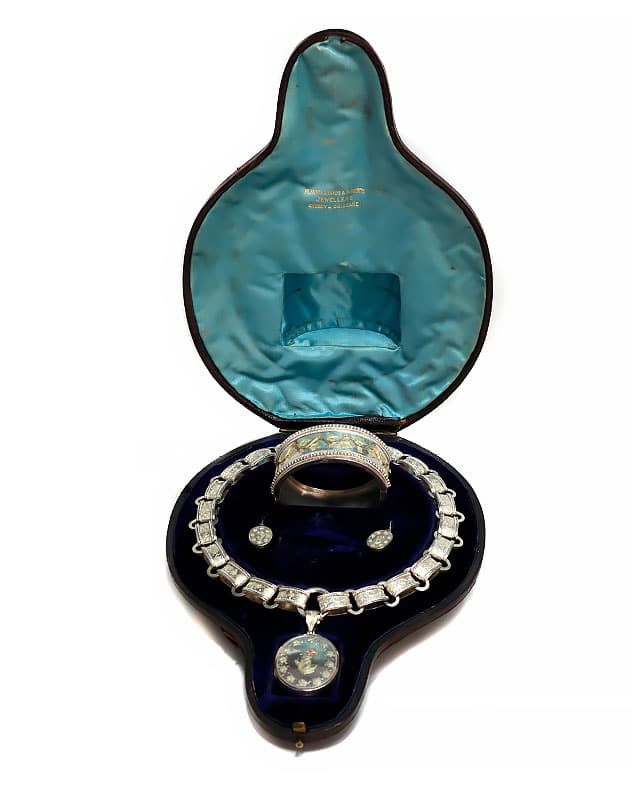
This item from the Kalmar Vault is a unique piece of 19th century Australian jewellery. Through tracing the history of this item, we uncover the story of the Flavelle brothers and in turn, the origins of jewellery manufacture within colonial Australia. This suite of jewellery is of exceptional quality and showcases the fashions and materials used throughout the late Victorian era.
History of the Flavelle Brothers
John Flavelle immigrated from England to the colony of New South Wales in 1844 (Source 1). He worked as an optician and in 1846 entered into a business partnership with Samuel Brush (Source 2). An 1847 advertisement for Flavelle and Brush showed them to be opticians (Source 3). In 1850 Samuel Brush joined with William MacDonnell to form Brush and MacDonnell at 488 George Street Sydney, the premises previously occupied by Flavelle and Brush' (Source 4). After this separation John Flavelle would bring on his brother Henry Flavelle and establish Flavelle Bros; John Flavelle would open business operations at 230 George Street Sydney (Source 2). 'John Flavelle controlled the business in Sydney while Henry Flavelle remained in London' (Source 5). As the business progressed the Flavelle brothers expanded into the jewellery and watchmaking trade, alongside their optician services. 'In the early forties, John and Henry Flavelle opened business as opticians. In the course of a few years they added jewellery to their stock, and greatly extended their business' (Source 6). By 1861 the business was prosperous enough to open a branch in Brisbane.
During this time the Flavelle Bros expanded their jewellery and silverware trade, whilst also importing many goods from their London based branch. They employed jeweller, John Roberts, around the mid 1850's and by 1869 he became an official partner to the business; the company then traded as Flavelle Bros and Roberts. As the business continued to grow the partners' sons were involved in the business and in 1885 the Sydney premises was expanded to include neighbouring retails spaces (Source 2). An advertisement in The Sydney Mail and New South Wales Advertiser on the 20th of December 1873 reads, 'Flavelle Bros and Roberts have just received the most valuable stock they have ever imported, selected by their London partner, whose late visit to the Vienna Exhibition and Paris enabled him to purchase a rare and choice assortment of brooches, crosses, rings, onyx and diamond jewellery' (Source 5).
In 1888 Henry Flavelle passes away in London. The business continues to trade and in 1892 the then managing director comes on board as an official partner, the company now trading as Flavelle, Roberts and Sankey. It is noted that John Roberts had left Sydney to become the resident partner in London, where he succeeded the late Henry Flavelle (Source 4). The Sydney branch turns its attention to jewellery manufacture, which was likely a response to 'the introduction of tariffs by the Commonwealth Government on a variety of imported goods, including jewellery' (Source 4). The business excels in this area, becoming renowned for its high standard of craftmanship, a level of which was previously believed to be unachievable in the colonies.
An article from Queensland Country Life published on the 22nd of September 1900, details these industry reservations, 'London were extremely sceptical as to the goods being made in Australia, stating that such workmanship and finish could only be obtained in London workshops. Flavelle, Roberts and Sankey are the only firm in the whole of Australia who do the whole of their work on their premises - that is, they have their own goldsmiths, silversmiths, lapidaries, engravers, watchmakers, scientific instrument makers, optician etc. all working under the roof' (Source 6).
Not only had the business of the Flavelle brothers reached great admiration from their English counterparts, but they were also held with high esteem within the Australian market. The brand had grown famous enough within the colonies that it was mentioned in the Rolf Boldrewood’s novel Robbery Under Arms in 1888 (Source 7). The passage from the novel reads;
‘Oh, what a lovely, splendid duck of a watch!’ says the girl, tearing open the parcel. ‘And what a love of a chain! and lots of charms, too. Where, in all the world, did you get this? I suppose you didn’t buy it in George Street.’
‘It WAS bought in George Street,’ says he; ‘and here’s the receipt; you needn’t be afraid of wearing it to church or anywhere else. Here’s Mr. Flavelle’s name, all straight and square. It’s quite new, as you can see.’
Upon the death of John Flavelle senior in 1899 the business converted to a limited company, trading as Flavelle Bros Ltd. The company continued to trade 'through the Federation period as one of the important retail jewellery houses' (Source 4). Flavelle, Roberts and Sankey had established branches in Rockhampton and Lismore. After becoming one of the most prolific Australian jewellers of the early colonies and one of the first jewellers to begin manufacturing practices in Australia, Flavelle, Roberts and Sankey traded as a jewellery firm in Sydney until 1921 (Source 4).

The Parure
This parure is an exceptional example of the work retailed by the Flavelle Bros and Roberts. Parures, or 'suites', of jewellery were at the height of French fashion throughout the 1600's and saw a resurgence during the Victorian era. This set contains a matching collar, locket, earrings, hinged bangle and would have included a brooch. Usually, the box an item of jewellery comes in, is not a definite indicator that the items were from the exact retailer, however in this case, the box has been custom made to fit this particular parure. The insert of the box reads, 'Flavelle Bros & Roberts Jewellers Sydney and Brisbane' which gives us the timeframe of 1869 to 1892 when the Flavelle brothers were trading under this name. This is when the importing side of the business was at its height and on the bangle, we have an English registry mark which attests to this piece being imported from the London branch of the business.

Using the English registry marking system, outlined in the above image, the mark on the bangle indicates the parure was imported on the 7th of January 1881. This aligns with the period which the business was trading as Flavelle Bros & Roberts.
The quality of this piece is undeniable with a distinct heft to the silver. The piece has designs of flowers and ivy patterns which are layered with yellow, rose and green gold. Green gold was produced sporadically during the 1800's but used mostly in the late 1800's and early 1900's, by adding silver as well as cadmium to gold (Source 8). It was unknown at the time that cadmium releases toxic fumes when being melted, proving extremely harmful to jewellers working with the material. Once the material has been alloyed it is completely safe to handle, however, once the dangers were known to jewellers production of green gold ceased.
This item is not for sale but is on permanent display at Kalmar Antiques as a part of The Kalmar Vault Collection.
Sources:
- Online Encyclopedia of Hallmarks & Maker's Marks (2009), 'Early Australian silversmiths', Early Australian Silversmiths - www.925-1000.com
- Museums Victoria (2023), 'Flavelle Bros & Co, opticians & jewellers, Sydney, new South Wales'; Museums Victoria Collections, Flavelle Bros. & Co, Opticians & Jewellers, Sydney, New South Wales (museumsvictoria.com.au)
- Flavelle's Rimless Glasses. (1909, November 16). Glen Innes Examiner (NSW : 1908 - 1954), p. 2. Retrieved August 7, 2023, from http://nla.gov.au/nla.news-article180122500
- Cavill, K; Cocks, G & Grace, J (1992) “Australian Jewellers, Gold & Silversmtihs-Makers & Marks: C.G.C Gold Pty Limited; pages 93-95.
- 1873 'Advertising', The Sydney Mail and New South Wales Advertiser (NSW : 1871 - 1912), 20 December, p. 779. , viewed 07 Aug 2023, http://nla.gov.au/nla.news-article162655493
- FLAVELLE, ROBERTS & SANKEY, LTD. (1900, September 22). Queensland Country Life (Qld. : 1900 - 1954), p. 29. Retrieved August 7, 2023, from http://nla.gov.au/nla.news-article101452717
- Boldrewood, R (1888), 'Robbery under arms; a story of life and adventure in the bush and in the goldfields of Australia', MacMillan Publishing, South Melbourne; Chapter 24.
- Kalmar, D (2014), 'An article on green gold', Kalmar Antiques; An article on green gold - Kalmar Antiques
